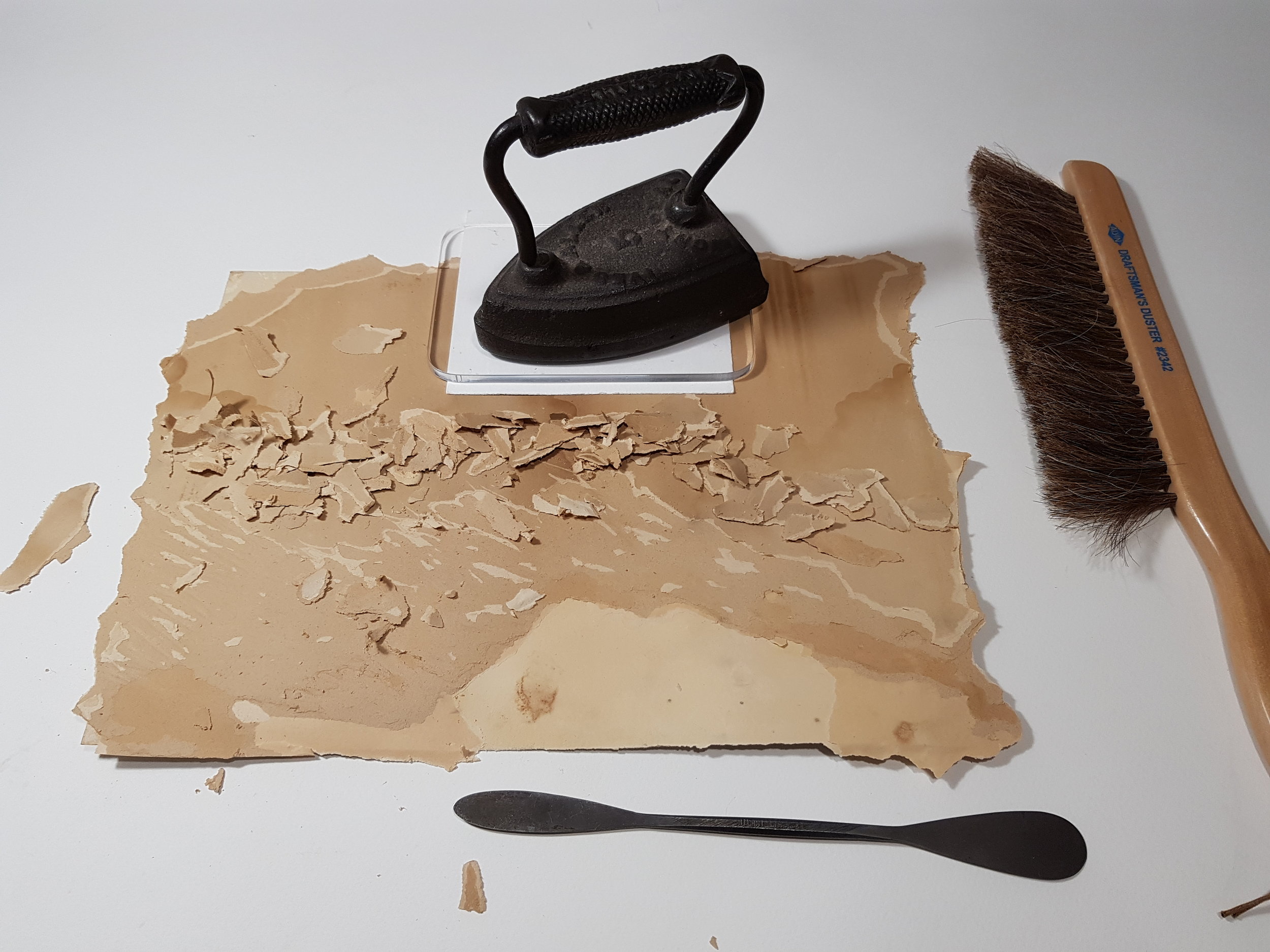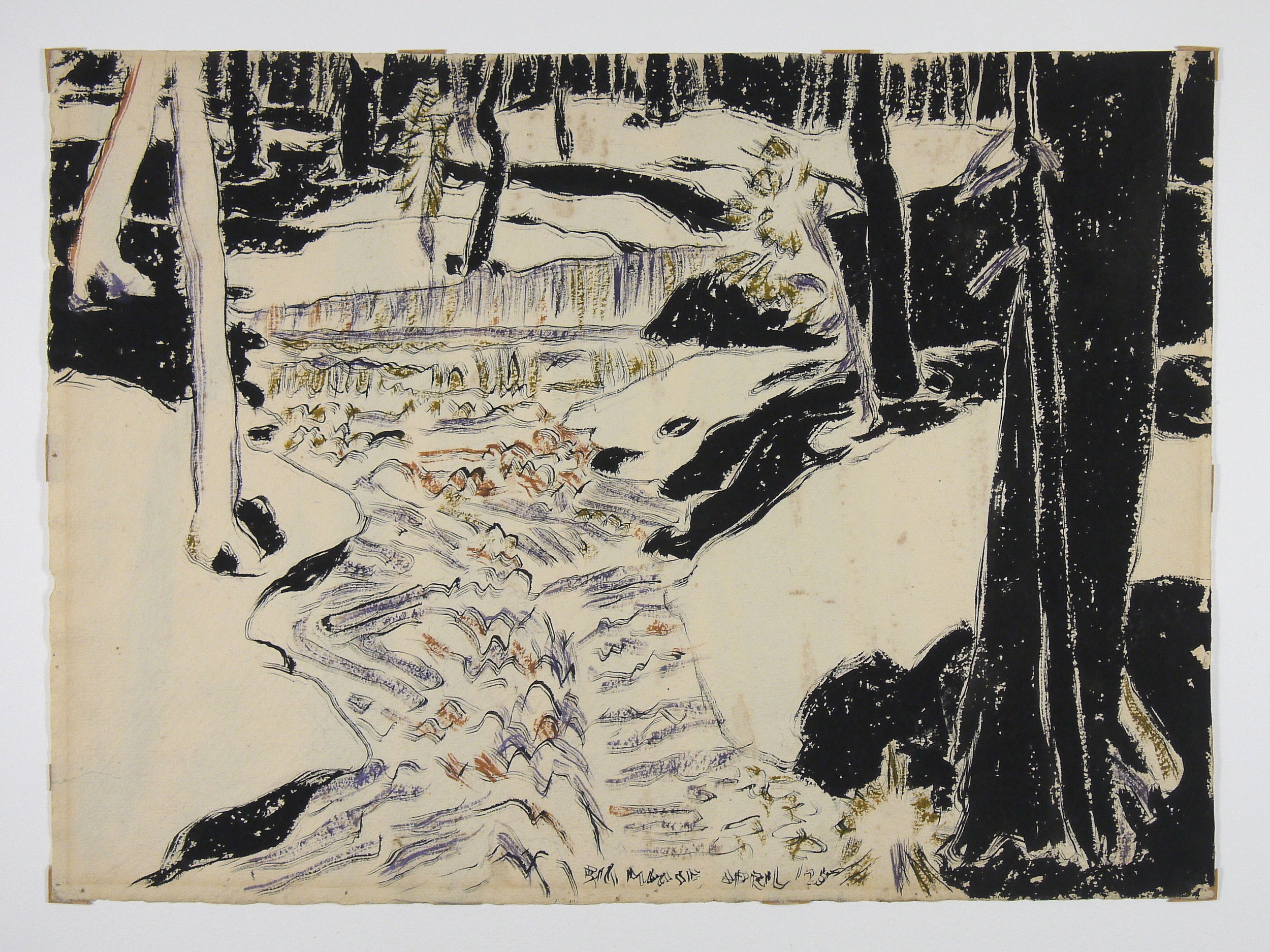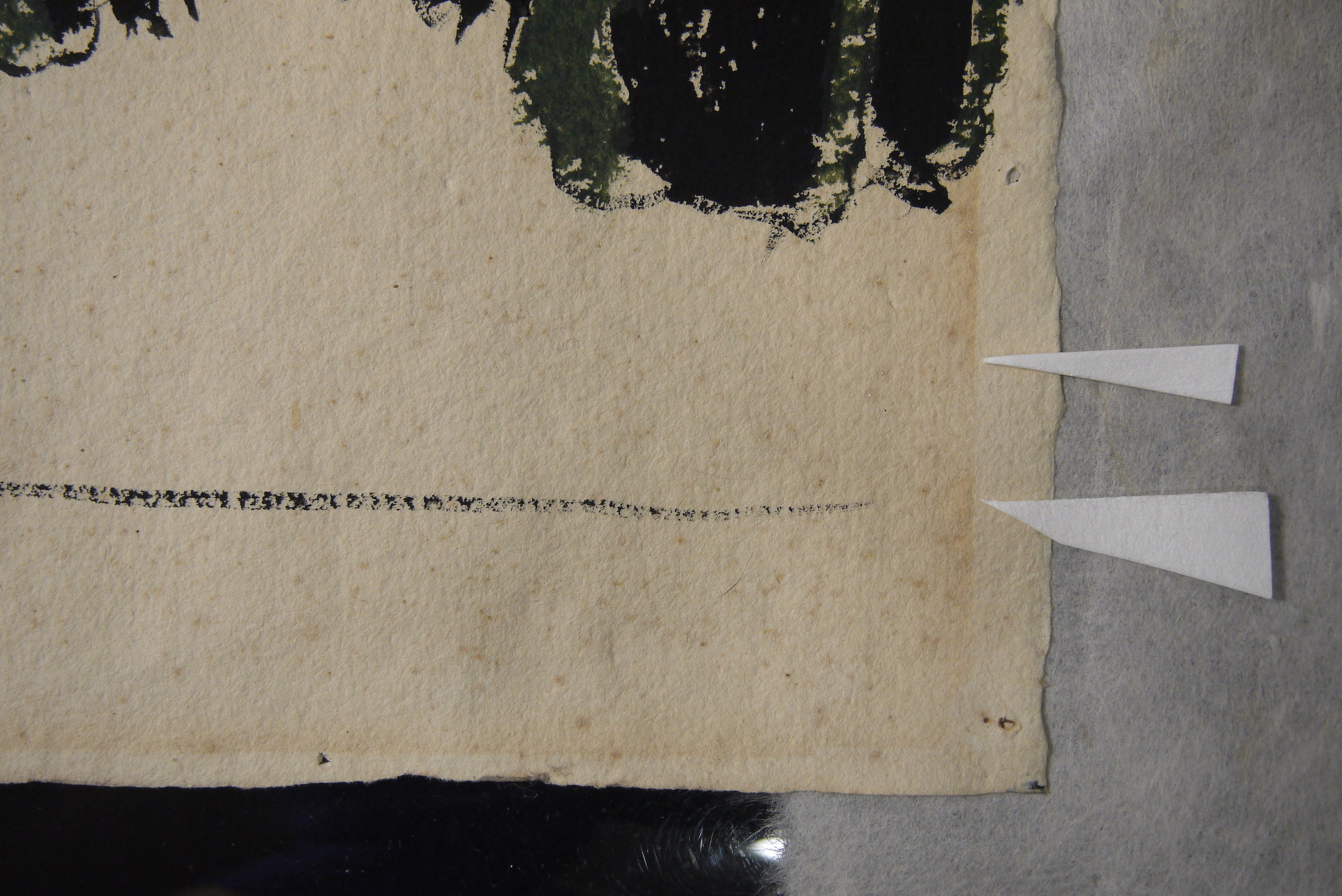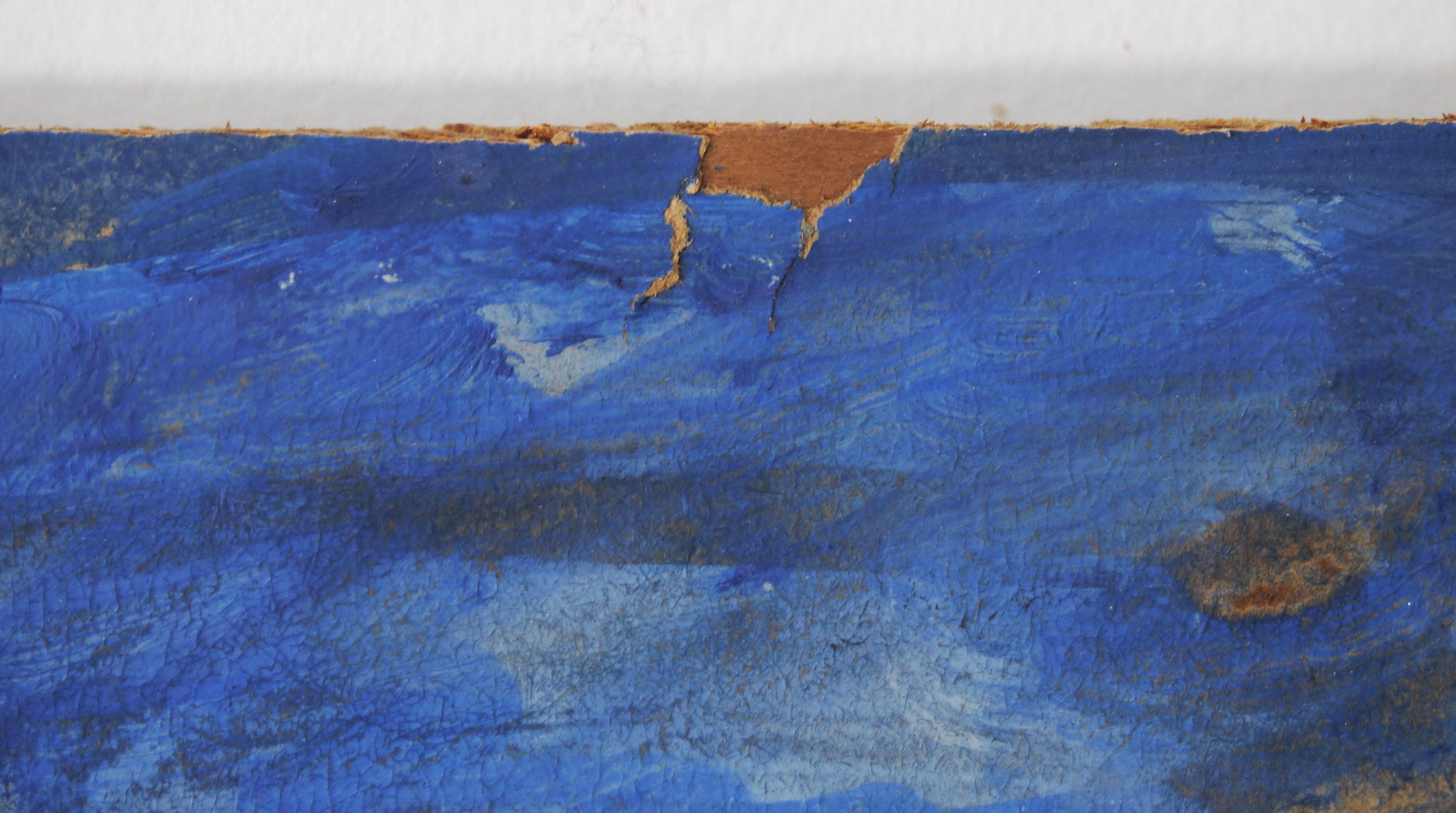19th century watercolour painting by J. M. Barnsley, before and after conservation treatment.
Sometimes bad things happen to good art! This elegant watercolour painting by Canadian artist J. M. Barnsley had suffered water damage in a flooded basement, causing a large disfiguring stain across most of the image.
19th century watercolour painting by J. M. Barnsley, suffering water and mould stains.
Luckily, recent stains are often easier to treat than old stains, and when the owners brought it to Book and Paper Conservation Services, we were able to help.
The process was multi-fold. First, the acidic pulp board backer on the watercolour was removed. This step was painstaking and time-consuming, but necessary before any cleaning could be undertaken. The brown colouring and acidity of the pulp board had leached into the painting when it was exposed to water, causing the staining in the image; it had also caused the paper overall to yellow and deteriorate. Backer boards like this are very common on 19th century watercolours, and this is why we always recommend they be removed as a preservation measure for any work of art on paper.
Removing the acidic pulp board backer from the watercolour painting.
Verso of the watercolour after backing removal. The stain is evident, as is the adhesive residue of the backer board.
Once the painting was free of the backer board, it underwent aqueous cleaning in deionized water; this treated not only the overall yellowing of the paper but also began the process of loosening the dark brown staining in the image. After several rinses, the watercolour was air dried, and the results evaluated. Washing had brightened paper tone and significantly reduced the hard brown water stain.
The watercolour during aqueous cleaning. The stain is loosening as water molecules penetrate the paper fibres.
Yellow discolouration removed by the first immersion cleaning.
After washing, before chemical bleaching. The paper tone is brighter, the staining is reduced.
After extensive testing to determine the sensitivity of the pigments and potential reaction of the stain, the final step was to locally apply a chemical bleach to further treat the discolouration. Only solutions that have been tested and approved by conservation scientists are used for chemical bleaching treatments, and only in very controlled applications; the treatment must not leave any trace amounts of chemical, or cause any further damage to the materials. In this case, a very low percentage of a reducing agent was used, and the paper was then rinsed multiple times to remove all chemical residue.
Testing local application of chemical bleach.
The bleaching treatment further reduced the stain, to the point that it is nearly eliminated. Light losses to the watercolour pigment in areas of mould damage were inpainted to unify the image. The scene can now be appreciated without distraction, and the paper tone is brighter, allowing the colours to appear as the artist intended.
After conservation treatment, the staining is barely visible, the paper tone is brighter and the image can once more be appreciated without distraction.
An unexpected revelation after treatment was the title of the painting, Gloucester Harbour, handwritten in graphite on the lower left corner of the verso.
The title of the painting, Gloucester Harbour, revealed on the verso.
The clients selected a new framing scheme for the artwork, and our conservation framing included Japanese tissue hinges adhered with reversible wheat starch paste, acid-free backer and mat board, and GroGlass ARTGLASS 99, offering 99% UV protection. The watercolour painting by J. M. Barnsley is once more looking its best, and is properly preserved for the future. The owners have it displayed in their home once again, and one day will pass it down in their family.
Conservation framing completes the project with acid-free materials and UV filtering glass.
If you have an artwork that has been damaged by flooding or another catastrophe, don't hesitate to contact us to discuss restoration options. You may think there's little hope to reverse the damage, but it never hurts to get a professional opinion; we're not miracle workers, but quite often conservation treatment can dramatically improve a damaged work of art.
Check out our portfolio of treatments, or contact us today.


















































